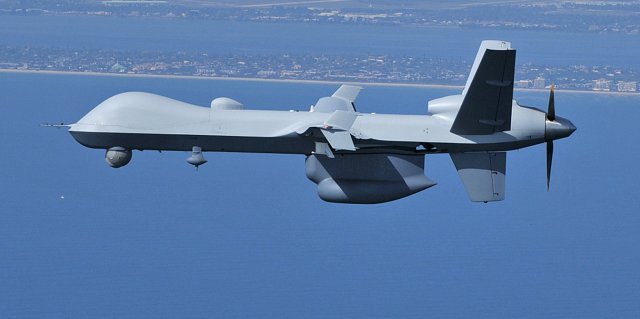 General Atomics Aeronautical Systems, Inc. has announced the successful demonstration of an Automatic Dependent Surveillance-Broadcast (ADS-B)-based surveillance system that provides pilots with enhanced situational awareness and supports GA-ASI’s overall airborne sense-and-avoid architecture for its Predator B.
General Atomics Aeronautical Systems, Inc. has announced the successful demonstration of an Automatic Dependent Surveillance-Broadcast (ADS-B)-based surveillance system that provides pilots with enhanced situational awareness and supports GA-ASI’s overall airborne sense-and-avoid architecture for its Predator B.
The purpose of the test was to demonstrate that the Predator/Gray Eagle-series aircraft can fly cooperatively and safely in the National Airspace System (NAS), allowing Air Traffic Control (ATC) to know their location and flight profiles precisely. BAE Systems provided a prototype of its Reduced Size Transponder, which has recently received the designation AN/DPX-7. The AN/DPX-7 is a military grade Identification Friend or Foe (IFF) transponder that interoperates with both military and civilian ATC surveillance systems and is ADS-B-capable.
“We are working closely with the FAA [Federal Aviation Administration], other governmental agencies, and industry partners to advance the safety of RPA”, said Frank W. Pace, president, Aircraft Systems Group, GA-ASI. “We believe ADS-B will play a key role in a future sense-and-avoid system and will support the FAA’s ‘Next Gen’ initiative, so this is a step in the right direction.”
Installed on a Guardian RPA, a Predator B configured for maritime operations, the prototype’s first successful flight test occurred on August 10 off the Florida coast. During the test, held in cooperation with the U.S. Department of Homeland Security, Customs and Border Protection, and the FAA, Guardian’s ADS-B IN-capable transponder detected other ADS-B-equipped aircraft in the vicinity and displayed the aircraft on a display within the Ground Control Station (GCS). Concurrently, Guardian’s ADS-B OUT transponder notified other aircraft and ATC of its location and velocity.
ADS-B is the GPS-based surveillance system that is the cornerstone of the FAA’s “Next Gen” Air Traffic Management (ATM) system, which aims to convert America’s ATC system from a ground-based system to a satellite-based system, resulting in simplified air traffic logistics and enhanced aircraft safety margins. The FAA has mandated that all aircraft flying above 10,000 feet or around major U.S. airports must be ADS-B equipped by 2020.
The results of the demonstration follows GA-ASI’s successful 2011 test of a prototype airborne Due Regard Radar aboard a manned aircraft. Based upon an X-band Active Electronically Scanned Array (AESA) radar, the capability will work in tandem with ADS-B to improve Predator B’s capacity to participate safely in domestic and international airspace, thus ensuring its interoperability with civilian air traffic and airspace rules and regulations.
Photo: Guardian – GA-ASI
Source: Press Release
